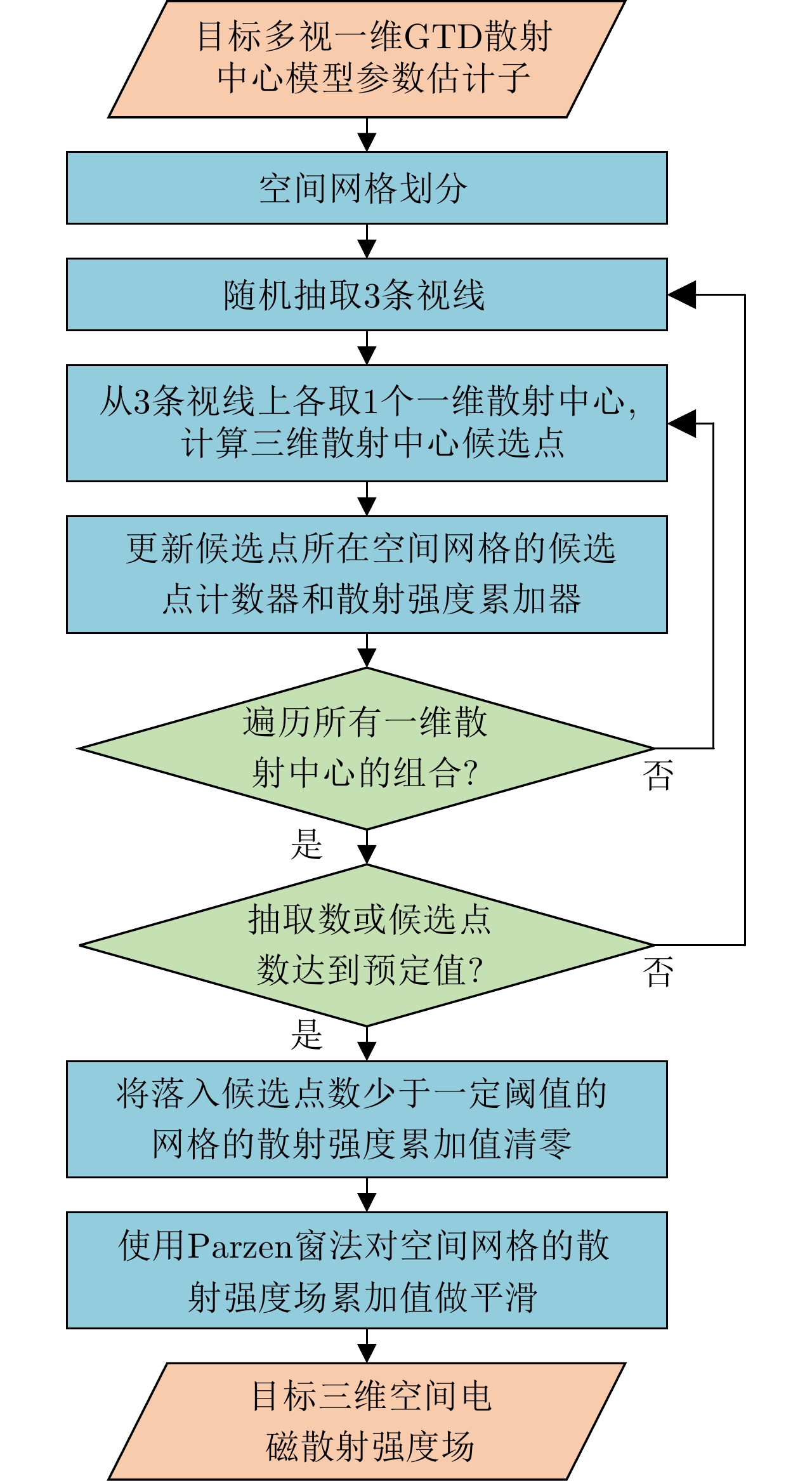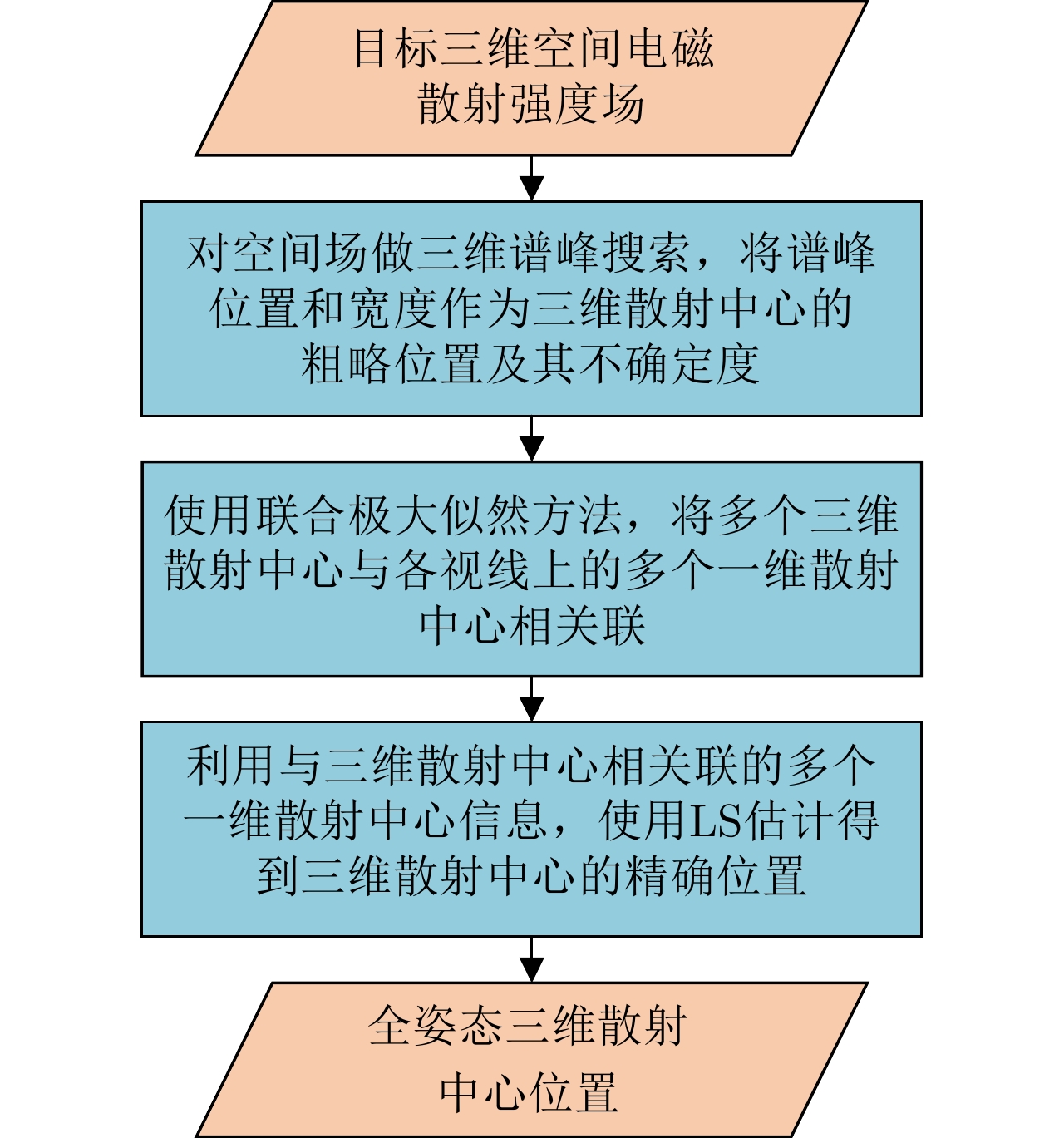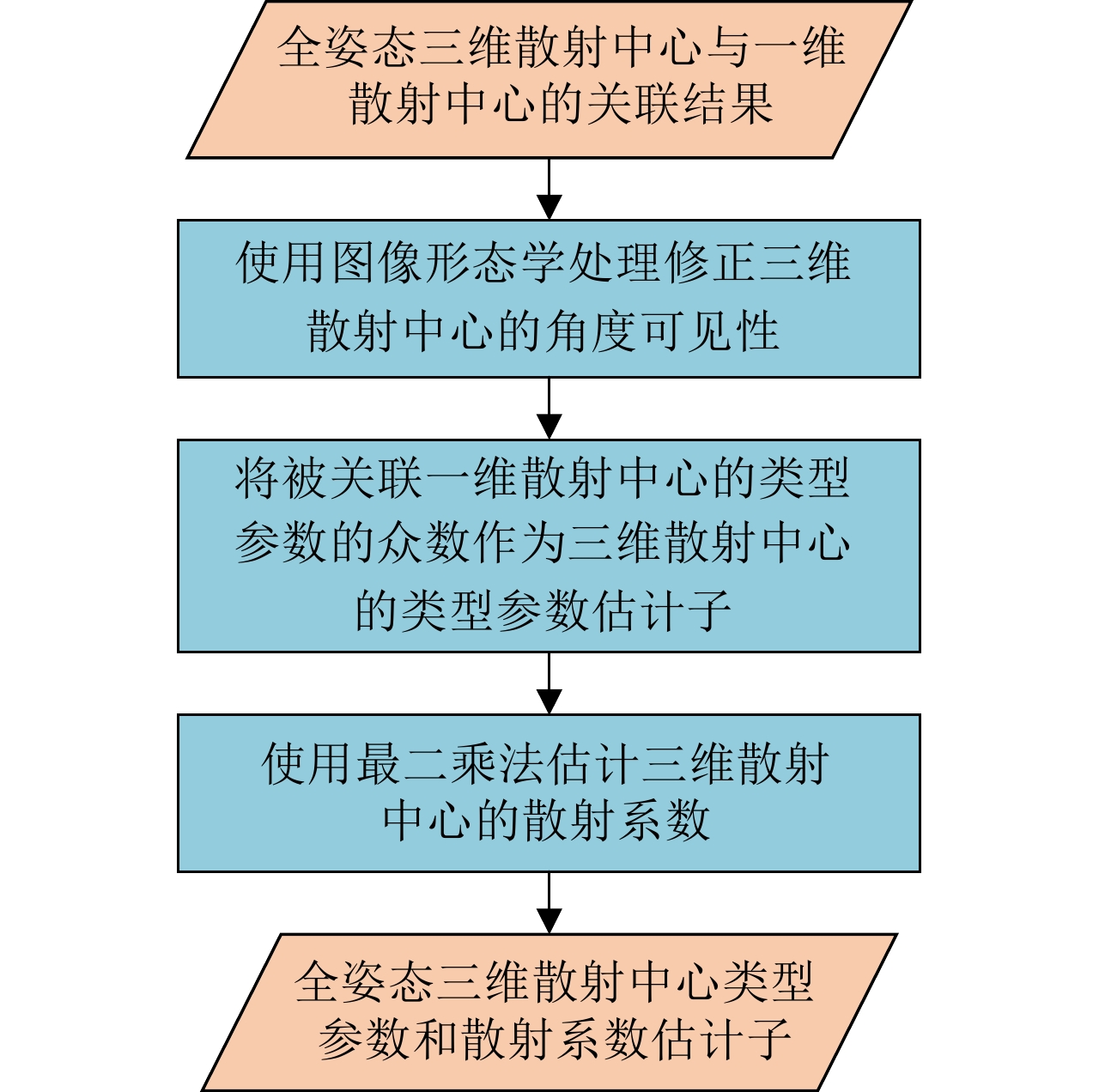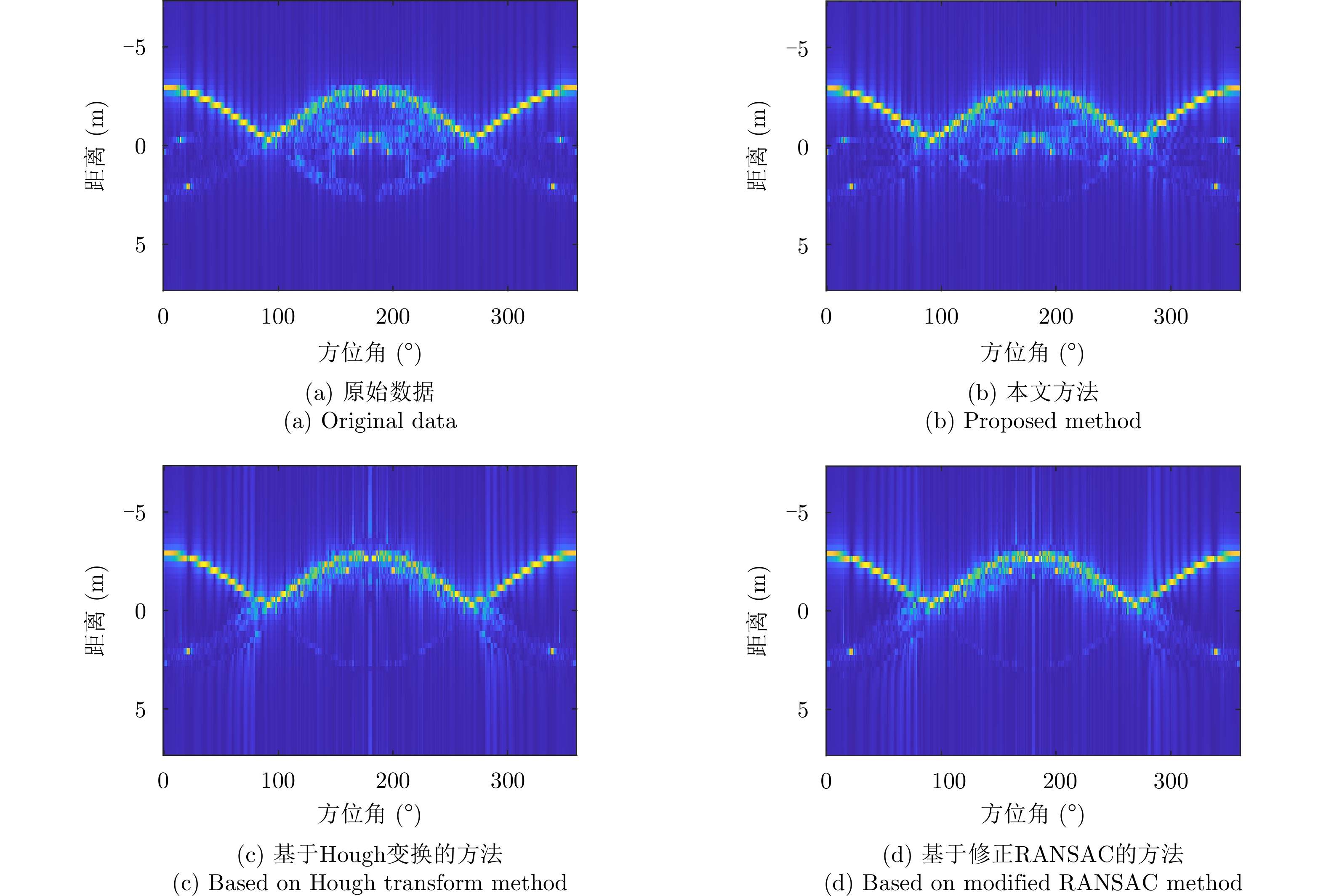| [1] |
黄培康. 雷达目标特征信号[M]. 北京: 电子工业出版社, 2005: 230–237.
HUANG Peikang. Radar Target Characteristic Signal[M]. Beijing: Publishing House of Electronics Industry, 2005: 230–237.
|
| [2] |
文贡坚, 朱国强, 殷红成, 等. 基于三维电磁散射参数化模型的SAR目标识别方法[J]. 雷达学报, 2017, 6(2): 115–135. doi: 10.12000/JR17034. WEN Gongjian, ZHU Guoqiang, YIN Hongcheng, et al. SAR ATR based on 3D parametric electromagnetic scattering model[J]. Journal of Radars, 2017, 6(2): 115–135. doi: 10.12000/JR17034. |
| [3] |
邢孟道, 谢意远, 高悦欣, 等. 电磁散射特征提取与成像识别算法综述[J]. 雷达学报, 2022, 11(6): 921–942. doi: 10.12000/JR22232. XING Mengdao, XIE Yiyuan, GAO Yuexin, et al. Electromagnetic scattering characteristic extraction and imaging recognition algorithm: A review[J]. Journal of Radars, 2022, 11(6): 921–942. doi: 10.12000/JR22232. |
| [4] |
ZHANG Wucai, PAN Minghai, and CHEN Shihong. Method of wide-band radar target echo signal simulation based on LFM subpulse[J]. Systems Engineering and Electronics, 2017, 39(4): 768–774. doi: 10.3969/j.issn.1001-506X.2017.04.11. |
| [5] |
HU Liping, YAN Hua, ZHONG Weijun, et al. Three-dimensional scattering center modeling and a fast SAR simulation method for ship targets[J]. Journal of Xidian University, 2021, 48(2): 72–83. doi: 10.19665/j.issn1001-2400.2021.02.010. |
| [6] |
GUO Kunyi, XIAO Guangliang, ZHAI Yun, et al. Angular glint error simulation using attributed scattering center models[J]. IEEE Access, 2018, 6: 35194–35205. doi: 10.1109/ACCESS.2018.2846538. |
| [7] |
HURST M and MITTRA R. Scattering center analysis via Prony’s method[J]. IEEE Transactions on Antennas and Propagation, 1987, 35(8): 986–988. doi: 10.1109/TAP.1987.1144210. |
| [8] |
POTTER L C and MOSES R L. Attributed scattering centers for SAR ATR[J]. IEEE Transactions on Image Processing, 1997, 6(1): 79–91. doi: 10.1109/83.552098. |
| [9] |
GERRY M J, POTTER L C, GUPTA I J, et al. A parametric model for synthetic aperture radar measurements[J]. IEEE Transactions on Antennas and Propagation, 1999, 47(7): 1179–1188. doi: 10.1109/8.785750. |
| [10] |
BHALLA R and LING Hao. Three-dimensional scattering center extraction using the shooting and bouncing ray technique[J]. IEEE Transactions on Antennas and Propagation, 1996, 44(11): 1445–1453. doi: 10.1109/8.542068. |
| [11] |
KENNAUGH E M and MOFFATT D L. Transient and impulse response approximations[J]. Proceedings of the IEEE, 1965, 53(8): 893–901. doi: 10.1109/PROC.1965.4068. |
| [12] |
BHALLA R, LING Hao, MOORE J, et al. 3D scattering center representation of complex targets using the shooting and bouncing ray technique: A review[J]. IEEE Antennas and Propagation Magazine, 1998, 40(5): 30–39. doi: 10.1109/74.735963. |
| [13] |
闫华, 陈勇, 李胜, 等. 基于弹跳射线法的海面舰船目标三维散射中心快速建模方法[J]. 雷达学报, 2019, 8(1): 107–116. doi: 10.12000/JR18078. YAN Hua, CHEN Yong, LI Sheng, et al. A fast algorithm for establishing 3-D scattering center model for ship targets over sea surface using the shooting and bouncing ray technique[J]. Journal of Radars, 2019, 8(1): 107–116. doi: 10.12000/JR18078. |
| [14] |
HE Yang, HE Siyuan, ZHANG Yunhua, et al. A forward approach to establish parametric scattering center models for known complex radar targets applied to SAR ATR[J]. IEEE Transactions on Antennas and Propagation, 2014, 62(12): 6192–6205. doi: 10.1109/TAP.2014.2360700. |
| [15] |
LIU Jin, HE Siyuan, ZHANG Lei, et al. An automatic and forward method to establish 3-D parametric scattering center models of complex targets for target recognition[J]. IEEE Transactions on Geoscience and Remote Sensing, 2020, 58(12): 8701–8716. doi: 10.1109/TGRS.2020.2989856. |
| [16] |
LIU Jiuxiang, XIAO Guangliang, GUO Kunyi, et al. Accurate scattering center modeling of thin-coated target[J]. Systems Engineering and Electronics, 2023, 45(6): 1589–1596. doi: 210.12305/j.issn.1001-506X.2023.06.01. |
| [17] |
蒋文, 李王哲. 基于幅相分离的属性散射中心参数估计新方法[J]. 雷达学报, 2019, 8(5): 606–615. doi: 10.12000/JR18097. JIANG Wen and LI Wangzhe. A new method for parameter estimation of attributed scattering centers based on amplitude-phase separation[J]. Journal of Radars, 2019, 8(5): 606–615. doi: 10.12000/JR18097. |
| [18] |
谢意远, 高悦欣, 邢孟道, 等. 跨谱段SAR散射中心多维参数解耦和估计方法[J]. 电子与信息学报, 2021, 43(3): 632–639. doi: 10.11999/JEIT200319. XIE Yiyuan, GAO Yuexin, XING Mengdao, et al. A decoupling and dimension dividing multi-parameter estimation method for cross-band SAR scattering centers[J]. Journal of Electronics & Information Technology, 2021, 43(3): 632–639. doi: 10.11999/JEIT200319. |
| [19] |
YANG Dongwen, NI Wei, DU Lan, et al. Efficient attributed scatter center extraction based on image-domain sparse representation[J]. IEEE Transactions on Signal Processing, 2020, 68: 4368–4381. doi: 10.1109/TSP.2020.3011332. |
| [20] |
XU Jiahua, ZHANG Xiaokuan, ZHENG Shuyu, et al. Attribute scattering center extraction based on improved orthogonal matching pursuit algorithm[J]. Systems Engineering and Electronics, 2021, 43(8): 2076–2082. doi: 10.12305/j.issn.1001-506X.2021.08.07. |
| [21] |
ZHENG Shuyu, ZHANG Xiaokuan, GUO Yidao, et al. Parameter estimation of 1D GTD scattering center model based on an improved MUSIC algorithm[J]. Journal of Beijing University of Aeronautics and Astronautics, 2020, 46(11): 2149–2155. doi: 10.13700/j.h.1001-5965.2019.0576. |
| [22] |
LI Shangsheng, WANG Xukun, FU Zhequan, et al. Extraction of scattering center parameter and RCS reconstruction based on the improved TLS-ESPRIT algorithm of Hankel matrix[J]. Systems Engineering and Electronics, 2021, 43(1): 62–73. doi: 10.3969/j.issn.1001-506X.2021.01.09. |
| [23] |
XU Jiahua, ZHANG Xiaokuan, ZHENG Shuyu, et al. GTD model Parameter estimation and target recognition based on improved 3D-ESPRIT algorithm[J]. Systems Engineering and Electronics, 2021, 43(2): 336–342. doi: 10.12305/j.issn.1001-506X.2021.02.07. |
| [24] |
NAISHADHAM K and PIOU J E. A robust state space model for the characterization of extended returns in radar target signatures[J]. IEEE Transactions on Antennas and Propagation, 2008, 56(6): 1742–1751. doi: 10.1109/TAP.2008.916932. |
| [25] |
魏少明, 洪文衍, 王俊, 等. 基于改进矩阵束的超宽带一维散射中心提取方法[J]. 电子与信息学报, 2022, 44(4): 1231–1240. doi: 10.11999/JEIT210602. WEI Shaoming, HONG Wenyan, WANG Jun, et al. Extracting UWB one-dimensional scattering center based on improved matrix pencil[J]. Journal of Electronics & Information Technology, 2022, 44(4): 1231–1240. doi: 10.11999/JEIT210602. |
| [26] |
GHASEMI M and SHEIKHI A. Joint scattering center enumeration and parameter estimation in GTD model[J]. IEEE Transactions on Antennas and Propagation, 2020, 68(6): 4786–4798. doi: 10.1109/TAP.2020.2975197. |
| [27] |
ZHOU Jianxiong, ZHAO Hongzhong, SHI Zhiguang, et al. Global scattering center model extraction of radar targets based on wideband measurements[J]. IEEE Transactions on Antennas and Propagation, 2008, 56(7): 2051–2060. doi: 10.1109/TAP.2008.924698. |
| [28] |
HU Jiemin, WANG Wei, ZHAI Qinglin, et al. Global scattering center extraction for radar targets using a modified RANSAC method[J]. IEEE Transactions on Antennas and Propagation, 2016, 64(8): 3573–3586. doi: 10.1109/TAP.2016.2574880. |
| [29] |
闫华, 张磊, 陆金文, 等. 任意多次散射机理的GTD散射中心模型频率依赖因子表达[J]. 雷达学报, 2021, 10(3): 370–381. doi: 10.12000/JR21005. YAN Hua, ZHANG Lei, LU Jinwen, et al. Frequency-dependent factor expression of the GTD scattering center model for the arbitrary multiple scattering mechanism[J]. Journal of Radars, 2021, 10(3): 370–381. doi: 10.12000/JR21005. |




 Submit Manuscript
Submit Manuscript Peer Review
Peer Review Editor Work
Editor Work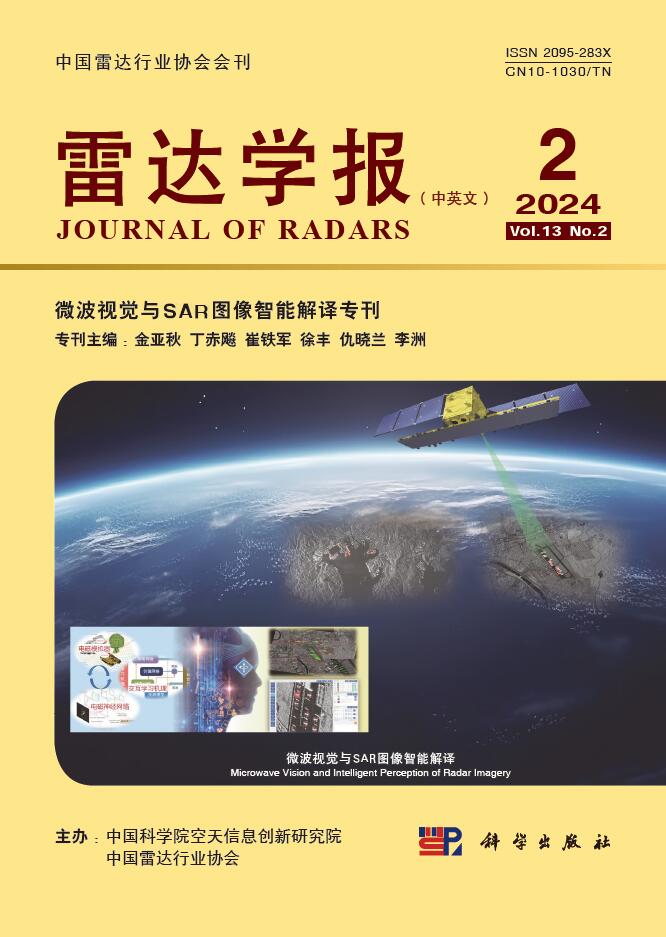

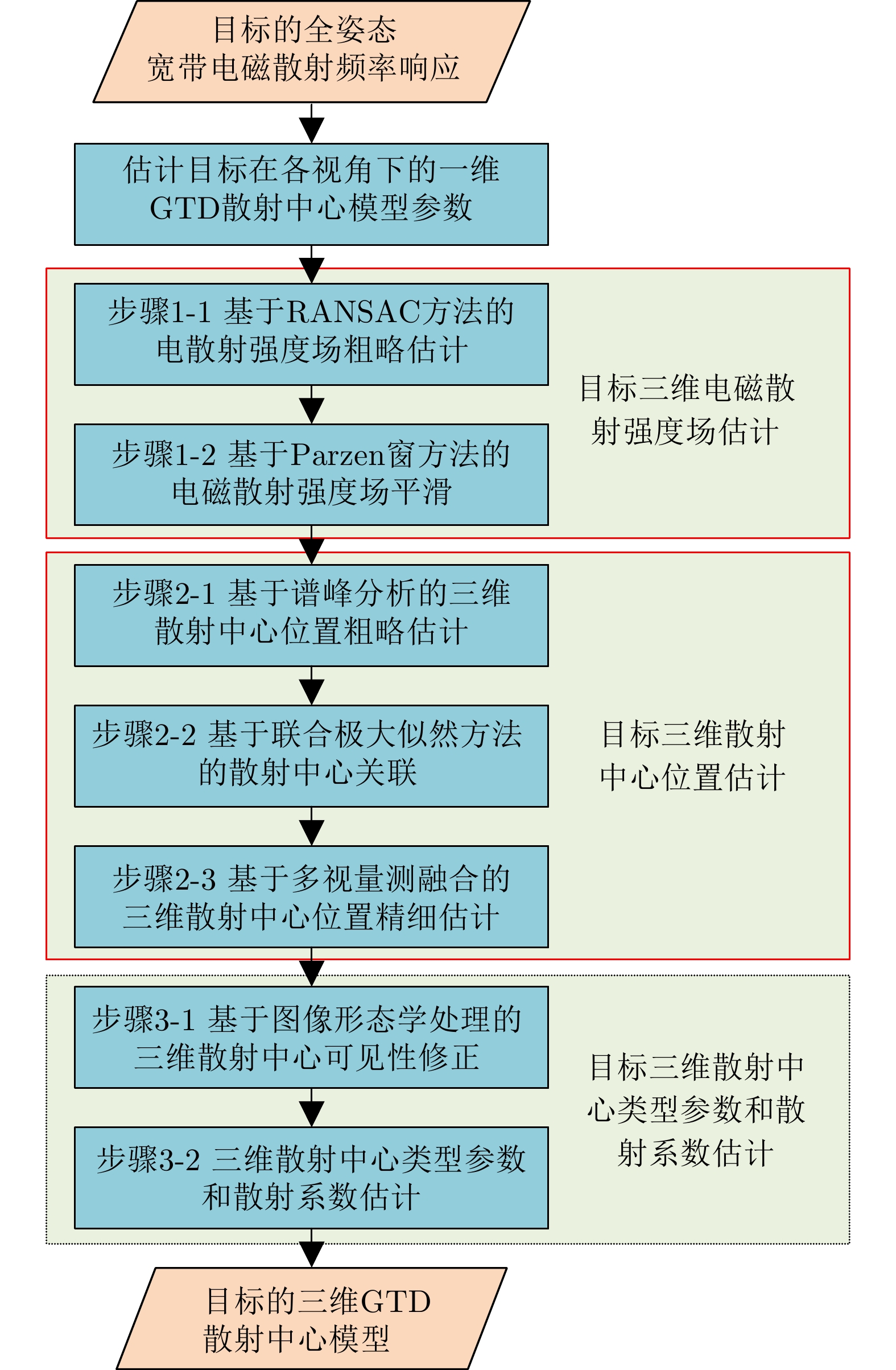



 DownLoad:
DownLoad:
